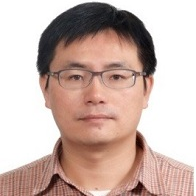Recent Advances in Smart System
A special issue of Micromachines (ISSN 2072-666X).
Deadline for manuscript submissions: closed (31 December 2015) | Viewed by 9874
Special Issue Editors
2. Advanced Institute of Manufacturing with High-tech Innovations, National Chung Cheng University, Chiayi 621301, Taiwan
Interests: non-linear system analysis and control; robust control; electrical and mechanical system control; signal processing; communication security and confidentiality control
Special Issues, Collections and Topics in MDPI journals
Interests: high precision instrument design; laser engineering; smart sensors and actuators; optical device; optical measurement; metrology
Special Issues, Collections and Topics in MDPI journals
Special Issue Information
Dear Colleagues,
Smart systems typically consist of diverse components: (1) Sensors for signal acquisition; (2) Elements transmitting the information to the command-and-control unit; (3) Command-and-control units that take decisions and give instructions based on the available information; (4) Components transmitting decisions and instructions; and (5) Actuators that perform or trigger the required action. A great number of smart systems evolved from microsystems. They combine technologies and components from microsystems technology (miniaturized electric, mechanical, optical, and fluidic devices) with other disciplines such as biology, chemistry, nanoscience, or cognitive sciences. By definition, smart materials and smart structures—and by extension smart systems—consist of systems with sensors and actuators that are either embedded in or attached to the system to form an integral part of it. The system and its related components form an entity that will act and react in a predicted manner, and ultimately behave in a pattern that emulates a biological function. New knowledge in this field will aid in the advancement of various technologies that are needed to gain industrial competitiveness. To this end, the Special Issue aims to disseminate the latest advancements of relevant fundamental and applied research works of high quality to the international community. Topics will include:
1. Recent advances in sensing materials and devices for smart system;
2. Recent advances actuation materials and devices for smart system;
3. Recent advances in control devices and techniques for smart system;
4. Recent advances in self-detection, self-diagnostic, self-corrective, and self-controlled functions of smart materials/systems.
Prof. Dr. Chien-Hung Liu
Prof. Dr. Her-Terng Yau
Guest Editors
Manuscript Submission Information
Manuscripts should be submitted online at www.mdpi.com by registering and logging in to this website. Once you are registered, click here to go to the submission form. Manuscripts can be submitted until the deadline. All submissions that pass pre-check are peer-reviewed. Accepted papers will be published continuously in the journal (as soon as accepted) and will be listed together on the special issue website. Research articles, review articles as well as short communications are invited. For planned papers, a title and short abstract (about 100 words) can be sent to the Editorial Office for announcement on this website.
Submitted manuscripts should not have been published previously, nor be under consideration for publication elsewhere (except conference proceedings papers). All manuscripts are thoroughly refereed through a single-blind peer-review process. A guide for authors and other relevant information for submission of manuscripts is available on the Instructions for Authors page. Micromachines is an international peer-reviewed open access monthly journal published by MDPI.
Please visit the Instructions for Authors page before submitting a manuscript. The Article Processing Charge (APC) for publication in this open access journal is 2600 CHF (Swiss Francs). Submitted papers should be well formatted and use good English. Authors may use MDPI's English editing service prior to publication or during author revisions.
Keywords
- smart system
- sensing system
- actuation
- smart control
- micro manufacture
- nanoscience
- Integration







